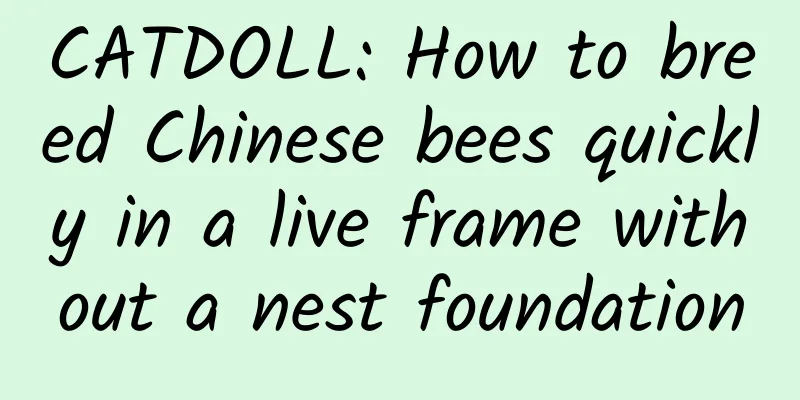CATDOLL : CATDOLL: What is the preparation and feeding method of bee feed?

What is the preparation and feeding method of bee feed?Bees are well known for their ability to collect honey from flowers. In fact, the main purpose of beekeeping is to obtain honey, but when the bee colony is short of honey, beekeepers also need to feed it in time. Therefore, how to prepare feed and feed the bee colony is a necessary technology in beekeeping. Let’s take a look at the preparation of bee feed and feeding methods! 1. Feed selection Bees are insects that live entirely on flowers (including nectar and pollen). Judging from the habits of bees, the best feed is honey and pollen, but the cost of feeding bees with honey and pollen is relatively high. Therefore, in beekeeping production, white sugar is often used instead of honey to feed the bee colony. In fact, there is no problem for bees to eat white sugar just like humans eat food. As long as the feeding is reasonable, it will not bring any negative impact on the bee colony. However, if white sugar is still fed in large quantities during the nectar flow period, the nature of the matter is completely different. 2. Feed Preparation The preparation method of bee feed is relatively simple. When feeding honey, you can directly add honey combs to the bee colony or dilute the honey with water and feed it. When feeding pollen, you can mix pollen and honey in a certain proportion and then fill the combs and add it to the bee colony. When feeding white sugar, you can make syrup with white sugar and boiling water in a 1:1 ratio and then feed it. Note that no matter what feed is fed, the hygiene of the feed must be ensured. Never feed bees with spoiled feed. In addition, you can also add some vitamin tablets, salt or bee medicine when preparing the feed. 3. Subsidized feeding Supplementary feeding is one of the two methods of feeding bees. Its purpose is to provide the bee colony with the food basis necessary for survival. It is usually carried out before wintering or in early spring. For example, when the bees do not have enough honey before wintering, the beekeeper needs to carry out supplementary feeding. The basic principle is to feed as much as the bee colony can accept at one time. At the same time, supplementary feeding is best carried out in the evening or at night. Feeding during the day, especially feeding syrup, is very likely to cause bee theft. In addition, long-term supplementary feeding can easily become reward feeding. 4. Reward Feeding Reward feeding is one of the two methods of feeding bees. Its purpose is to stimulate the queen bee to lay eggs and encourage worker bees to feed through feeding. It is usually carried out during spring and autumn breeding. For example, when the bees enter the spring breeding period, reward feeding can quickly reproduce the bee colony. In addition, reward feeding is also required in autumn to encourage the bee colony to cultivate a large number of overwintering bees of the right age. The basic principle is to feed in small amounts but continuously. In short, the amount of feeding each time should be small, but feeding should be carried out continuously throughout the breeding period. Summary: The best feed for bees is honey and pollen, and the most commonly used is syrup. But no matter which feed you choose, you must ensure the hygiene of the feed and do not cause abnormal conditions in the bee colony due to feed problems. In addition, you must choose the corresponding feeding method. The best feed for bees is honey and pollen, and the most commonly used is syrup, but no matter which feed is chosen, the hygiene of the feed must be ensured to avoid abnormal bee colonies due to feed problems. When feeding honey, you can directly add honey combs to the bee colony or dilute the honey with water and feed it to the bee colony. When feeding pollen, you can mix pollen and honey in a certain proportion and then fill the combs and add it to the bee colony. When feeding white sugar, you can make syrup with white sugar and boiling water in a 1:1 ratio and then feed it. Note that no matter what feed is fed, the hygiene of the feed must be ensured. Never feed bees with spoiled feed. In addition, you can also add some vitamin tablets, salt or bee medicine when preparing the feed. You can replenish honey combs, prepare some water, and prepare some syrup, so that the bees can grow better. What to feed bees?Why do beekeepers feed sugar to their bees? Since people began to raise bees artificially, feeding white sugar to bees has always been a concern for people. When people see beekeepers feeding white sugar, they think they are cheating. In fact, this statement is not true at all. I am a beekeeper and I know that white sugar is sometimes needed in the process of beekeeping. And it can be divided into two categories in terms of usage; one is called "reward feeding" and the other is called "rescue feeding". What is reward feeding? The so-called reward feeding refers to the best way to give tempting feeding at regular intervals and quantitatively when there are fewer flowers outside and fewer bee colonies going out to collect bees, so that they mistakenly believe that flowers are blooming outside. If applied well, it can make the bee colony excited, the queen bee lays more eggs, and the bee colony grows rapidly. Prepare strength for the arrival of the flowering period. The general feeding amount is about 100 ml and the concentration cannot be too high. The principle is "regular and quantitative, less rather than more, light rather than thick." There is another situation where white sugar must be fed, that is, when there is no honey in the bee colony and it is to the point where it will die if it is not fed. At this time, "rescue feeding" should be used. The biggest difference between it and reward feeding is whether there is honey stored in the bee colony and the amount of feeding. "Rescue feeding" is to feed you with a high concentration and large amount at one time. Generally, reward feeding is used for bee breeding before the arrival of a large nectar source, while rescue feeding is generally used when excessive honey is taken at the end of flowering, when the bees have no food reserves or when the bees cannot survive on their own due to sudden bad weather. It can be said that these two feeding methods are very particular and are an important part of keeping bees well. Now many people say that beekeepers feed bees with white sugar and then take honey. In fact, if you think about it carefully, you will know that if you really want to fake it, there is no need to be so complicated. Just add sugar at home. You also need to use water to dilute it and then feed it to the bees. Do you want to show it to people? Moreover, the current price of white sugar is not low. One ton has risen to more than 8,000 yuan. Do you think anyone will use white sugar to fake it? And have you seen with your own eyes that beekeepers feed bees with white sugar water today, and see him take honey tomorrow or the day after tomorrow? Maybe you are still worried that the white sugar used in the previous reward feeding and rescue feeding will be left. I can tell you that you can rest assured that 100 ml a day is not enough for the bees to consume. Rescue feeding. You may feed more, but you still have to buy the white sugar with money. Compared with the honey provided by nature for free, I think that stupid beekeeper will not be so stupid. Therefore, the idea of feeding white sugar to cheat is not true at all. What to feed bees Of course, drinking water usually feeds honey and pollen. It is not worth feeding honey wine to babies who are already producing honey. How to keep bees and what do they eat 1. When the infestation of bee mites is serious and there are many sealed combs, all the sealed combs should be taken out, fumigated with sulfur for 3-5 minutes, and then ventilated for 10-20 minutes before returning the brood combs to their original boxes. 2. For the prevention of American larval disease, 30,000 units of tetracycline or oxytetracycline can be fed to each bee frame. For the treatment of the disease, sulfathiazolin sodium and oxytetracycline tablets can be used alternately or mixed. Each tablet is mixed with dilute *** and fed to 16 bees for 7-10 consecutive days. 3. Big belly disease is also called dysentery, which is mostly caused by indigestion and failure to excrete in time. You can mix a certain dose of norfloxacin and yeast tablets in 40-50% diluted honey water and feed them for 2-3 days. 4. Black bee disease is also called paralysis. It is mainly caused by low temperature and humid environment. It can be treated with 200,000 units of chlortetracycline or neomycin syrup, and fed once every 2 days for 3-4 times. 5. Chalk disease can be treated with Chalk Net No. 2 developed by Zhejiang Agricultural University Bee Research Institute. Spray 0.4 grams on each larvae spleen, which has a good therapeutic effect. We must do a good job in preventing plant honey and pollen poisoning, pesticide poisoning, and damage caused by diseases and pests, implement safe production, and ensure the health of the bee colony. Bees belong to the phylum Arthropoda, class Insecta, order Hymenoptera, family Apidae, genus Apis. 1. Variety Introduction 1. Italian bees It is a yellow bee native to Italy. The abdomen of Italian bees usually has three brown-yellow segments, and the last three segments are black. The abdomen of the queen bee is usually brown-yellow, and the tail end is mostly black. Italian bees are highly adaptable, docile, and easy to manage. The queen bee has strong egg-laying ability and the worker bees have strong feeding ability. They are weak in swarming and can easily maintain large groups. The worker bees have strong gathering ability and are good at gathering large quantities of nectar sources with long honey flow. They secrete a lot of wax and build honeycombs quickly. The disadvantages of Italian bees are that the queen bee has no restrictions on egg-laying, consumes more feed, has poor wintering performance, is prone to bee theft and lost nests, and is not as good as the Chinese bee in avoiding enemies. 2. Chinese bees The Chinese bees in the north are larger in size and more cold-resistant than those in the south. They are less sensitive to the cold than those in the south. The queen of Chinese honey bee is generally black, and a few have dark red abdomens; the abdomen of worker bees is yellow-brown with black rings. Chinese honey bees are cold-resistant and heat-resistant, agile in flight, with a keen sense of smell, and are good at collecting scattered nectar sources and avoiding enemies. Chinese honey bees have good honeycomb-making performance, do not collect gum, have high-quality wax, and are more resistant to mites than Western honey bees. The disadvantages of Chinese honey bees are that they are prone to natural swarming and flight escape, and are also prone to bee theft. The most suitable bees for breeding in Zhejiang include the Zhejiang Agricultural University No. 1 Italian bee variety, which produces both royal jelly and honey, as well as high-quality queen bees from Pinghu and Changxing, local Italian bees, Carpathian bees, etc. 2. Structure of a bee colony A bee colony is a unit in which bees live and thrive, and consists of a beehive, honeycombs, and three types of bees: worker bees, queen bees, and drones. A colony of bees usually consists of a queen bee, tens of thousands of worker bees, and a few drones bred during the breeding season. 1. Queen Bee The queen bee is the only fully developed female bee. The queen bee is 1/4-1/3 longer than the worker bee and weighs about twice as much as the worker bee. She has a long life span of 4-6 years. The queen bee's function is to lay eggs and also plays a core role in maintaining the group life of the bee colony. 2. Drone Drones are relatively stout, with fully developed male organs and particularly developed vision. They are the mates of the new queen bee in the bee colony and play an important role in the reproduction of the bee colony. Drones only live for three months. They cannot collect honey and rely on worker bees for feeding. They also eat a lot, several times more than worker bees. After the breeding season, they must be artificially "killed". In late autumn and early winter, in order to save feed, worker bees will also expel drones from the hive and let them die of starvation and cold. 3. Worker Bees The smallest individual is responsible for all the labor of the bee colony, such as collecting nectar and pollen, brewing bee food, feeding bees, feeding the queen bee, building nests, guarding the hive, regulating the temperature within the bee colony, and taking 3. Key points of bee colony management 1. Relocating bees to new locations Relocating bees to other places is one of the main forms of beekeeping in Huzhou. 1. Determine the bee-releasing route. This refers to the bee-releasing route that the bee colonies pass through for reproduction and production throughout the year. It can be summarized into three routes: the east and north routes and the middle and west routes. The east and north routes are given below. East and North Line. Around New Year's Day in the north/bee colonies → Fujian and Guangdong for wintering and breeding at the end of February and early March along/Yingxia Line, Zhejiang-Jiangxi Line, Anhui-Jiangxi Line → Jiangxi and Anhui for rapeseed and astragalus honey collection in late March and early April/Zhejiang-Jiangxi Line, Shanghai-Hangzhou Line, Shanghai-Nanjing Line → northern Zhejiang, southern Jiangsu, northern Jiangsu and northern Anhui for rapeseed and astragalus honey collection in late April to May......>> How to feed sugar to bees Feeding 1. Supplementary feeding: artificial feeding when nectar sources are scarce. The methods are: ① honey supplementation. Honey can be diluted with 20% warm water (crystallized honey needs to be boiled with a little water). The diluted honey can be fed to the bees by pouring into the comb or pouring it into the frame feeder. ② Supplementary syrup. Syrup is made of 50% white sugar and water. After heating and fully dissolving, it is cooled to lukewarm. It is best to add 0.1% citric acid to the syrup to facilitate digestion and absorption. Brown sugar is not suitable at this time. 2. Reward feeding: artificial feeding during the bee colony breeding period and bee production period. Generally, a small amount of 60% *** or 50% syrup is given every other day in early spring. After that, the consumption increases and it can be given once a day. The time starts from 40 days before the nectar flow period until there is a large amount of honey and pollen from the outside world. Each frame of bees can be rewarded with 50 to 100 grams of syrup each time. 3. Feeding pollen: The purpose is to supplement protein feed. In the late winter and early spring, the pollen stored in the previous autumn can be used as a supplement, or soybean powder can be used instead. The feeding methods are as follows: (1) Liquid feeding. Add 10 times the amount of syrup to pollen, boil it, wait for it to cool, and then feed it in a feeder. (2) Cake feeding. Add an equal amount of honey or syrup to pollen or a substitute pollen, stir it thoroughly, make it into a cake, wrap it with plastic paper, open it at both ends, and place it on the frame beam for bees to feed. This method is often used when encountering cold currents. 4. Feeding water and salt: ① Water. Generally, each bee colony needs 200 to 300 ml of water per day. Put water in the feeder or put 1% salt on the gauze cover. How Honey Feeds Bees First, the queen bee lays fertilized eggs. In 6 hours, the worker bees will secrete royal jelly in them. In 3 days, the larvae will hatch. The worker bees will increase the royal jelly. After another 3 days, they will be small larvae. After that, the worker bees will feed pollen and honey mixture called bee food. After another 3 days, they will be large larvae. The large larvae will secrete a message to make the worker bees seal the caps. After 12 days, young bees will come out. The queen bee is the fertilized egg in the queen bee cell. The worker bees will take good care of the larvae so that they can keep eating royal jelly. As long as they eat royal jelly for five days, they can be sealed. After 7 days, a new queen will come out. The drone is even more different. First, the queen bee lays unfertilized eggs. The worker bees will also feed royal jelly for 6 hours. After hatching, they will also eat royal jelly for 3 days, and then eat bee food for 4 days. In 12 days, a new drone will come out. That is to say, it takes 21 days for worker bees to leave the room, 16 days for queen bees, and 24 days for drones. Ding is like this. I hope my answer can help you a little bit! What should you pay attention to when raising bees? 1. Site selection There should be sufficient main nectar sources and auxiliary nectar and pollen sources within a radius of 2.5 kilometers around the site, and the main and auxiliary nectar and pollen sources should be appropriately matched; the site should be selected on a south-facing hillside with sufficient sunlight, backed by high mountains and natural shade above, with southerly winds in summer and northerly winds blocked in winter, and the soil should be fertile, with vigorous growth of nectar plants, a long flowering period, sufficient water and convenient transportation. 2. Selection of bee colonies 1. Purchase time: The best time to buy in the north is April to May. This is the breeding period of bee colonies, the selection is relatively stable, and the external environment is good, making it easy to raise bees successfully. 2. Selection method: Observe at the entrance of the nest. Those who are diligent in entering and exiting the nest and collect more pollen are generally lively and good. Then open the box for inspection. If the worker bees are quiet and not panicked, it means that the bee is gentle. If the queen bee is large, has thick feet, is tall and has a wide chest, a long and plump abdomen, is covered with dense hair, and lays eggs flexibly and quickly without panicking, it means that the queen bee is young and strong, and has a strong egg-laying ability. 3. Arrangement of bee colonies: It depends on the size of the site, the number of bees and the season. There are four arrangements: single-box arrangement, double-box arrangement, staggered arrangement and triple-box arrangement. 3. Feeding 1. Supplementary feeding: artificial feeding when nectar sources are scarce. The methods are as follows: ① Supplementary feeding with honey. Honey can be diluted with 20% warm water (crystallized honey needs to be boiled with a little water). The diluted honey can be fed to the bees by gavage or poured into a frame feeder. ② Supplementary feeding with syrup. Syrup is made by adding 50% white sugar to water, which is heated and fully dissolved and then cooled to lukewarm. It is best to add 0.1% citric acid to the syrup to facilitate digestion and absorption. Brown sugar should not be used at this time. 2. Reward feeding: artificial feeding during the bee colony breeding period and bee production period. Generally, a small amount of 60% *** or 50% syrup is given every other day in early spring, and then once a day as consumption increases. The time starts from 40 days before the nectar flow period until there is a large amount of honey and pollen from the outside world. Each frame of bees can be rewarded with 50-100 grams of syrup each time. 3. Feeding pollen: The purpose is to supplement protein feed. In the late winter and early spring, the pollen saved in the previous autumn can be supplemented, and soybean powder can also be used instead. The feeding method is as follows: (1) Liquid feeding: Add 10 times the amount of syrup to the pollen, boil it, wait for it to cool, and then put it in a feeding container for feeding. (2) Cake feeding. Add an equal amount of honey or syrup to pollen or pollen substitute, mix thoroughly, and make into cakes. Wrap them with plastic paper, open at both ends, and place them on the frame beam for bees to feed. This method is often used during cold snaps. 4. Feeding water and salt: ① Water. Generally, each bee colony needs 200-300 ml of water per day. Put water in the feeder or put 1% salt on the gauze cover. IV. Management 1. Spring management: ① Promote bees to fly and excrete. Raise the temperature in the center of the nest to 33-35℃, provide sufficient nectar and pollen sources or reward feeding, open the box cover and insulation in time to allow them to fly out of the nest and excrete. ② Insulate the hive. After excretion, the bees enter the breeding period, so artificial insulation must be adopted. Compact the hive and make the colony dense. Raise multiple colonies in the same box, and keep the box warm inside and outside. In the north, it lasts until April to May. 2. Management during the honey flow period: ① Adjust and organize the honey collection group in the early stage. ② Maintain strong groups to collect honey. Control the queen bee's egg laying. Use a queen excluder to restrict the queen bee to one area of the hive or the hive. To cut off the brood and collect honey, you can take out the queen bee and 1 to 2 honeycomb bees from the honey collection group 5 days before the big honey flow period to form another small group. The next day, give the honey collection group a mature queen cell, which can greatly increase the honey production. Pay attention to the management of small groups. For those weak groups that cannot collect honey, create conditions to promote the rapid development of the group. Under the premise of appropriate honey collection, we must do a good job of reproduction to replenish the group. 3. Management in autumn: ① Cultivate new queens and replace old and inferior queens. ② Cultivate overwintering bees of appropriate age. Overwintering bees of appropriate age refer to young bees that have emerged from their cells before overwintering, have only performed two or three excretion flights, have not done any feeding or collecting work, and have not secreted royal jelly. In order for overwintering bees to overwinter safely, the birth of young bees born after the nectar flow period must be controlled to maintain the strength of the bee colony. The method of control is to force the queen bee to stop laying eggs at a certain time during the nectar flow period. ③ Timely early termination of offspring. In the later stage of cultivating overwintering bees, first use honey and pollen to press the combs, and pour honey 2 to 3 times, so that the queen bee will stop laying. At the same time, move the bee colony to a cool place, expand the bee path by 1 time, and take out the pollen combs from the hive, and remove the insulation, so as to terminate offspring early. 4. Winter management: ① Adjust the nest door. The height of the nest door should be 6-7 mm and the width should be 60-70 mm. ② Prevent honey from forming......>> What should you pay attention to when raising bees? This is not something that can be explained in just a few words. Keeping bees is very complicated. I keep bees at home. Just like what was said above, you need a manual. You said that almost all the bees in your home have left, so you need to check whether the queen bee is still there. If the queen bee is gone, the group of bees will slowly disappear. If the queen bee is still there, if you want to keep it well, you should pay attention to keeping the beehive warm in cold weather, and the entrance to the hive should not be too large to prevent other insects from entering and harming the bees. In addition, there are many kinds of flowers in spring, so no additional feeding is needed. Only when there is a lack of food in the cold winter, you need to feed sugar to the bees, otherwise, it may attract wild bees to fight. One point that needs special attention is to pay attention to the prevention and control of nest insects, which are the mortal enemy of bees and feed on the hive. You should buy a book on beekeeping to learn more about it. I wish you a happy beekeeping~ Why do beekeepers always bring a lot of white sugar? Is it for the bees to eat? Bees collect honey because they want to eat it..it is their food.. The beekeeper took the honey away and put sugar in it for the bees to eat, otherwise they would starve to death..- - In addition, some unscrupulous beekeepers mix water and sugar into honey and sell it. How to feed newly recruited bees If you are a beginner and don't have a beehive, you can use a wooden barrel or wooden box, put a bowl of sugar water in it, put a grass ball in the bowl, put the bee colony in it in the evening, cover it, leave a small hole for the bees to enter and exit, feed some sugar cane water every night, and let the bees build nests. Then slowly make a standard beehive and transfer the bee colony to the new beehive. |
<<: CATDOLL: Will mountain bees swarm in August and September?
>>: CATDOLL:How to raise snails?
Recommend
CATDOLL: Can I keep a mongoose at home?
1. Can you keep mongooses at home? Don't just...
CATDOLL: How many types of bee diseases are there?
There are many types of bee pests and diseases. I...
CATDOLL: The difference between sturgeon and crab
1. Sturgeons and crabs are different species. (1)...
CATDOLL: Where can I learn the technology of breeding red worms (where can I learn the technology of breeding red worms)
1. What are the breeding techniques for red worms...
CATDOLL: How to breed hairy crabs?
How to breed hairy crabs? The hairy crab is a hig...
CATDOLL: How to raise snails? (What do you need to prepare to raise snails)
1. Snail breeding technology? 1. Open-air farming...
CATDOLL: Video explanation of the process of raising silkworms (video explanation of the process of raising silkworms with pictures)
1. What is the whole process of silkworm rearing?...
CATDOLL: What are the small animals that eat cockroaches?
What are some small animals that eat cockroaches?...
CATDOLL: Do bees need to be fed in summer? (Do bees need to be fed in summer? Why?)
1. How to raise and manage bees during the dog da...
Signs a cat hates another cat
Signs a cat hates another cat: 1. Because cats wi...
CATDOLL: What is the difference between wading ducks and landlubbers?
What is the difference between water duck seedlin...
What should I pay attention to when my cat's cheeks are puffy?
Cats need to pay attention to cheek puffiness: 1....
CATDOLL: How many types of grouper are there?
What are the types of grouper? Let's learn ab...
CATDOLL: How to distinguish male and female newly born alligator turtles
1. How to distinguish male and female newly born ...
CATDOLL: Can swimming crabs be farmed?
1. Can swimming crabs be farmed? Swimming crabs c...









